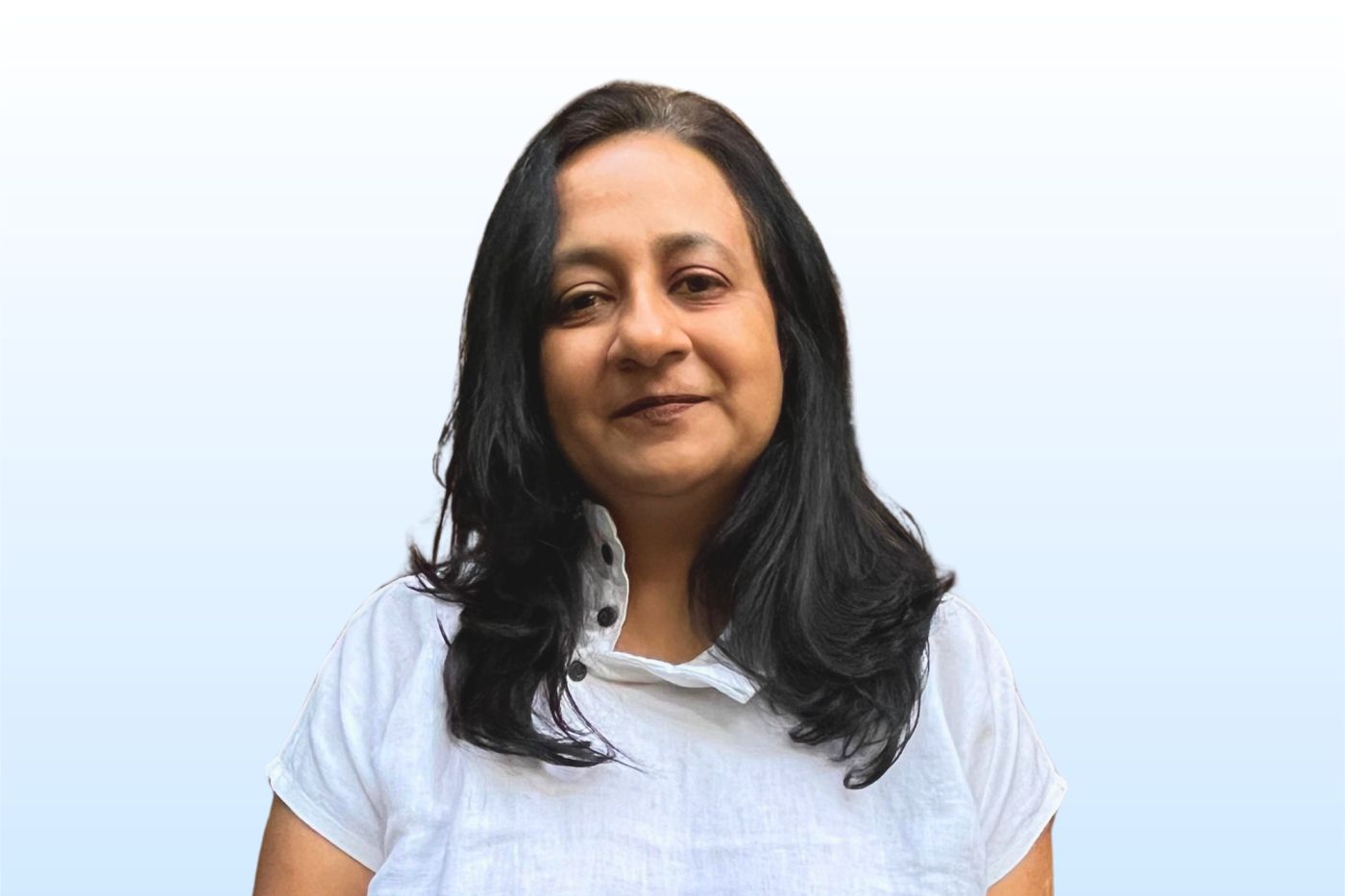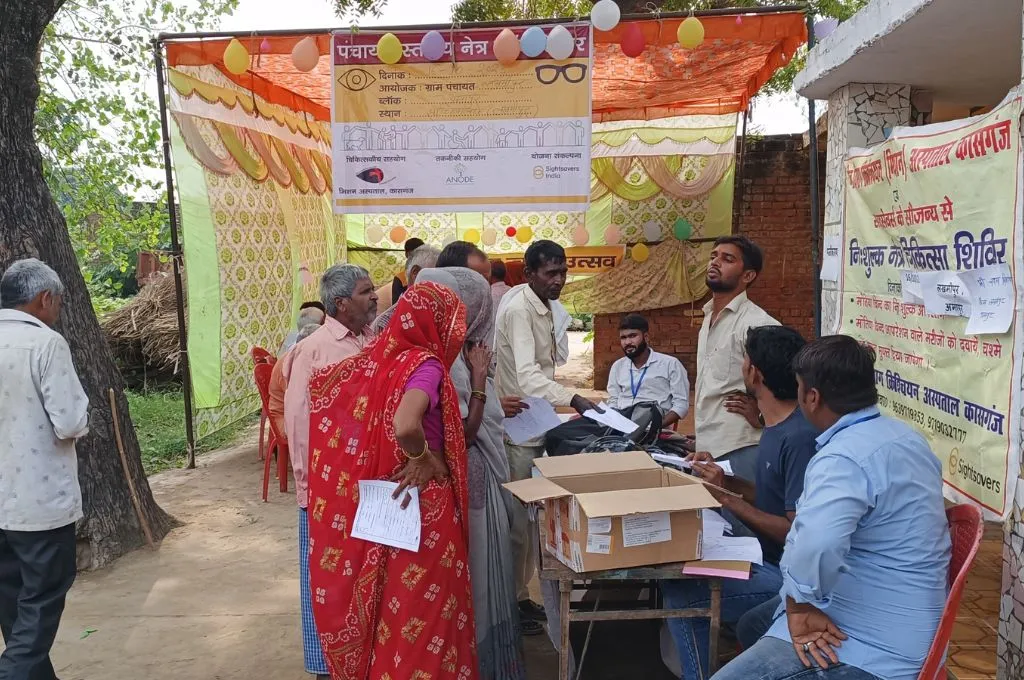Karnataka’s children’s village sabhas, known as makkala grama sabhas in Kannada, are a vibrant platform for children in rural areas to engage with their local government—that is, the gram panchayat—on issues that matter to them. In 2006, the Rural Development and Panchayat Raj (RDPR) department in Karnataka released a government order mandating that one gram sabha (where the children form the sabha) should be conducted by every gram panchayat focused on the issues of children.
Typically, 150–250 children from five to six villages participate in a makkala grama sabha. Other than the students, attendees include the president and vice president of the gram panchayat, the panchayat development officer (PDO), the cluster resource person (CRP) from the education department, and others such as ASHA and Anganwadi workers; teachers; officers from health, women, and child development agencies; and a representative from the local police station.
In these sabhas, children bring up issues concerning them and fellow children, their school, and the community they live in. The questions raised are usually about infrastructure needs in the school and the village or children’s safety (such as the presence of alcohol shops near their school, or gambling and vandalism in school premises after hours).
Each year, between November and January, tens of thousands of children across more than 6,000 gram panchayats participate in makkala grama sabhas. This article is based on the learnings and experiences of Children’s Movement for Civic Awareness (CMCA), a civil society organisation engaged in implementing a structured programme to energise these sabhas in Karnataka since 2011.

A step towards child-responsive local governance
Child-responsive governance is important to ensure that children are not passive recipients but active participants in all matters and decisions related to them. The school students we interacted with say that these gram sabhas have enabled them to voice their concerns. Renuka,* a standard 9 student from Chikkamagaluru, states, “This sabha is very useful. We don’t have a compound, computers, or digital equipment at our school; once we shared these requirements, the government officials promised to make our school tech-enabled. If we didn’t get such forums, we would never be able to speak about existing problems.”
The panchayat officials we have interacted with also consider gram sabhas to be a positive influence. Acknowledging the importance of children’s perspectives, Digvijay Bodke, CEO of Ramanagara zilla panchayat, tells us, “We need to think from children’s point of view to understand their problems. Makkala grama sabhas helps us understand what is going on in their minds.”
To enable more inclusivity and safe opportunities for children, gram panchayat officials ensure that children’s voice boxes are placed in schools and other public spaces, and in the sabha. The boxes can be used by the children even if they don’t attend the sabha or if they are hesitant to speak out on some of their needs and challenges.
Makkala grama sabhas have shown us that a well-meaning government, sound policies and mechanisms, adequate focus and motivation from state- and district-level officers, and a vibrant civil society can make a meaningful difference to communities. For instance, in government schools in Chikkaballapura and Hassan districts, necessary repairs and improvements to school buildings have resulted from the discussions in makkala grama sabhas. Children have spoken about issues relating to access to scholarships related to income certificates; asked for awareness programmes on the POCSO Act for both authorities and the community; demanded intensive awareness efforts on child marriages for schoolchildren and others, and so on.
What do makkala grama sabhas need?
Since children are required to participate, listen, and be fully involved when attending a gram sabha meeting, the makkala grama sabhas have played an important role in inducting them into the democratic process. However, here are some other measures to make children a more effective vehicle for change.
1. The presence of key decision-makers
It is critical that representatives and accountable officials from the gram panchayat—including the president of the panchayat, other elected members, the PDO, officials from the education department, the ASHA worker and Anganwadi teacher, and child rights agencies—are in attendance, as this plays a major role in making the children’s village sabha productive. It is only when these officials attend that correct information can be provided to the children, and the adults responsible for the care of children. This enables solutions to be found for challenges such as who will take responsibility for the resolution of the issue, and where can the funds for some issues that are not directly linked to the gram panchayat be allocated from.
The children we spoke to also realise this. “After attending today’s gram sabha, I felt happy as the government officials assured us that our requests and concerns will be taken into consideration. I wish some of the department officials who didn’t attend the event would have also attended so they could have addressed our concerns as well,” said Anitha,* a standard 9 student.
2. A more holistic approach towards child development and participation
A more holistic approach towards child development and participation is needed for makkala grama sabhas to achieve their desired higher-level outcomes. We see that issues raised by children at the makkala grama sabhas are mostly still related to fundamental entitlements such as school repairs and ensuring that schools have the necessary infrastructure.
As Karnataka moves towards and aligns to policies that drive child-responsive local governance, consistent periodic review and accountability mechanisms involving children—such as child participation in budgeting and decision-making—are important. These measures enable the resolution of issues related to basic entitlements in a timely and ongoing manner. The result will be an improved experience for children and better participation in makkala grama sabhas, with more meaningful and deeper dialogues between children and their local government. This in turn will have a transformational impact on child development indicators and the overall well-being of children.
3. More female representatives
It must be highlighted that with women comprising 50 percent of the elected representatives in gram panchayats, responsiveness to children has witnessed a marked change for the better. We see that women representatives tend to navigate challenges better, striving to promptly find solutions for the issues raised by children. Further strengthening of institutional mechanisms—such as appointing a nodal officer at the state level for effective implementation; Right to Education entitlement audits by children themselves, where children can report back directly on quality and delivery of services; and formal meetings in schools and other spaces to discuss the problems faced by children—would also be helpful.
In addition, PDOs reporting back to children (action taken report) within a committed timeline and makkala grama sabha outcomes being integrated into the online portal of the concerned department (education, health, etc.) can go a long way in ensuring more effective child participation, according credibility to the process, and fulfilment of child development indicators as well as sustainable development goals.
The role of state–civil society partnerships
The circular by the RDPR department is today a detailed and effective document. It has been strengthened over the years through nonprofits’ grassroots experiences, which have come to the RDPR department as recommendations. Nonprofits such as The Concerned for Working Children (CWC), Children’s Movement for Civic Awareness (CMCA), Prakruti Foundation, Gramaantara, Child Rights Trust (CRT), and Nav Yuva Pratishthan have worked towards ensuring that the makkala grama sabhas keep thriving.
Here are some steps taken by civil society organisations (CSOs) for this:
- CMCA works within schools and rural libraries to educate children about the objective of participating in makkala grama sabhas and their role as citizens.
- Nonprofits such as CWC and CRT work in community spaces and with out-of-school and most vulnerable children to enable more inclusive children’s village sabhas.
- Like-minded nonprofits collaborate with and provide technical support (in the form of reporting formats, evaluation tools, and analysis services) to one another to enable more effective makkala grama sabhas.
- Nonprofits have leveraged existing institutional training programmes to equip and support panchayat development officers for the smooth functioning of makkala grama sabhas.
- CSOs make recommendations to the circular and provide awareness collaterals—which includes materials, such as communication posters, that are meant to disseminate information—to support the state as well as other CSOs.
In Karnataka and beyond
It is time for other states to bring children’s village sabhas to their own gram panchayats, adding to existing policies and initiatives.
Even as child-responsive local governance as an overarching objective gains momentum, this unique platform serves as a milestone, a checking and review point, and an event that brings cheer and hope to children while recognising the importance of children’s participation in our democracy. Such powerful experiences of participative democracy in childhood will lead to greater citizen engagement with the government, not only in elections and while voting, but also as a way of life.
* Names changed to maintain confidentiality.
—





